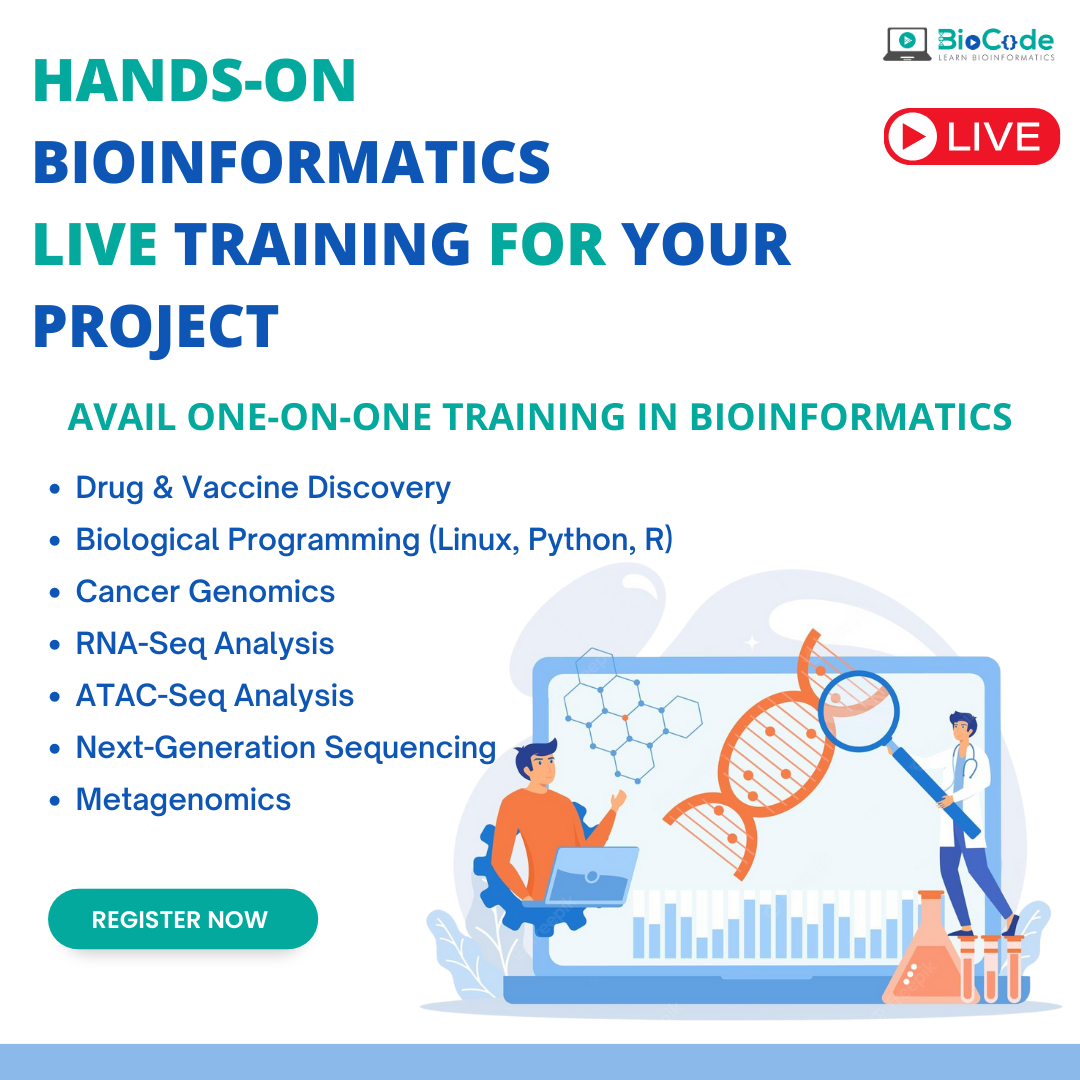Bioinformatics Tutor Things To Know Before You Get This
Bioinformatics Tutor Things To Know Before You Get This
Blog Article
Bioinformatics Tutor Things To Know Before You Get This
Table of ContentsSome Ideas on Bioinformatics Tutor You Should KnowHow Bioinformatics Tutor can Save You Time, Stress, and Money.Bioinformatics Tutor - The FactsBioinformatics Tutor Can Be Fun For EveryoneRumored Buzz on Bioinformatics Tutor
Of the overall individuals associated with the training, 80% were trainees from public college institutions, while the remaining 20% came from exclusive organizations. To receive a certification of involvement, students were called for to go to at least 90% of the overall training hours. As a result of this need, an impressive 95% of the individuals successfully gotten their certificates, having not only satisfied the minimum participation criteria but also completed all designated activities throughout the training.
Throughout the height of the COVID-19 pandemic, especially in between June and August 2020, the project team was entrusted with organizing specialized training in bioinformatics. This training was particularly focused on students from the research team Center for Study in Applied Computing at the Federal University of Pará (UFRA) The adaptation to remote discovering systems as a result of the pandemic developed a chance to check out brand-new training methodologies and electronic tools that improved both reach and performance.
This training course was developed to provide an available yet extensive overview of Artificial Intelligence techniques, particularly as applied in bioinformatics (Bioinformatics Tutor). This online format enabled participation from trainees throughout Brazil, many of whom could not have had the possibility to participate in in-person sessions.
Get This Report on Bioinformatics Tutor
Roughly 50% of the complete training hours were devoted to functional tasks where students developed smart models and applications in a range of scientific domain names, including genes, molecular biology, and environmental data analysis. These systems made it possible for pupils to involve in real-time data adjustment, design training, and formula trial and error.
The training course attracted 80 individuals in total amount. Sixty of them were associated with different college organizations in the state of Pará, while the remaining twenty originated from organizations situated in five other Brazilian states. This broad geographical representation highlighted the national passion in bioinformatics and the expanding demand for specialized abilities in this field. By introducing Expert system in a practical and pertinent context, the campaign served to bridge the void in between theory and real-world application, offering students with a solid structure for future research study or employment in the area.
The training effort created part of a more comprehensive scholastic outreach effort known as the Bioinformatics when traveling project. This job has, throughout the years, presented loads of trainees to the globe of bioinformatics and computational biology. The events held under this umbrella effort have actually happened across numerous areas and years, as summarized in Table 1 (Checklist of occasions, places, years, and total numbers of pupils and instructors)
Among one of the most amazing results of the Bioinformatics on the Roadway campaign has actually been its payment to the growth of decentralized research teams. Several of these groups, initially united by their involvement in training events, have actually given that taken place to generate independent clinical research in partnership with neighborhood academic institutions. The training not only promoted scientific thinking within the context of bioinformatics yet additionally stimulated joint relationships that prolonged past the training environment. These collaborations have actually led to enhanced neighborhood clinical productivity and contributed meaningfully to the advancement of the more comprehensive bioinformatics area in Brazil.
Bioinformatics Tutor - The Facts
The same group, omitting IH and RR, additionally acted as tutors for the sensible training modules. Financing for the project was offered via the give 88887.200562/ 2018-00 from CAPES.
The Federal University of Pará's Workplace of Research study (PROPESP/UFPA) also supplied financial backing, especially for the production of the last manuscript. The writers declare no industrial or financial disputes of rate of interest that might have affected the research. All point of views and analyses shared in this post are solely those of the authors and do not always reflect those of their particular institutions, the publisher, editors, or customers involved in the magazine procedure.

Getting My Bioinformatics Tutor To Work
From an instructional point of view, the mentor method used in the training was intentionally interactive. Courses were performed in a way that encouraged pupil participation and conversation, surpassing rote memorization to discover how concepts are established, applied in life, and examined in scholastic Source setups. The educational philosophy concentrated on nurturing both solid and having a hard time students, offering customized support, and building self-confidence through sustained mentorship and perseverance.

Each team, being composed of around 36 participants, was supported by three mentors-- many of whom were postdoctoral researchers with specialized know-how. These coaches not only helped make the team projects however additionally promoted their implementation, making certain that each research inquiry was both suitably tough and relevant. The goal was to give a naturally reasonable context that individuals could discover with flexible objectives and access to curated datasets.
For added understandings right into the methodology and end results of this project-based knowing strategy, viewers are routed to S1 Text, which consists of detailed summaries of the instructional structure, analysis strategies, and project themes used in the training sessions.
The 10-Second Trick For Bioinformatics Tutor
Of the overall participants entailed in the training, 80% were trainees from public greater education organizations, while the remaining 20% came from exclusive institutions. helpful resources To certify for a certificate of involvement, pupils were called for to participate in at least 90% of the overall training hours. Notably, beyond the trainees that enlisted in the training sessions, seven skilled teachers took part in providing the training courses, while three specialized research teachers collaborated the total training procedure. Around 50% of the overall training hours were devoted to sensible activities where pupils built intelligent models and applications in a variety of scientific domain names, including genetics, molecular biology, and ecological data analysis. The training not just cultivated clinical reasoning within the context of bioinformatics however likewise triggered collective relationships that extended past the training atmosphere.
Report this page